Given a resistive element that fluctuates between 0 and 10kOhms, a PNP transistor, a 20V source and a bunch of resistors, is it possible to construct a circuit with an output voltage as follows:
1) Linear output with respect to the resistance of the variable element, at least within the 2 to 5kOhm range.
2) Output voltage is 0V when the variable element is at 2kOhms
3) Output voltage is 5.12V when the variable element is at 5kOhms
i.e. we want to use these elements to construct a circuit that has some \$V_o(R) = \frac{5.12}{3000}*(R-2000) \$
I am very unskilled in circuit design. Can anyone give me any pointers?
